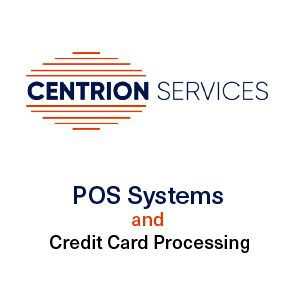Life moves faster than ever before. Between managing careers, raising children, maintaining relationships, and trying to carve out some semblance of personal time, modern families face an unprecedented juggling act. Add to this the rapid pace of technological change, shifting educational landscapes, and evolving social norms, and it’s no wonder so many parents feel perpetually overwhelmed.
Yet some families seem to navigate these complexities with remarkable grace. They’re not superhuman, nor do they possess unlimited resources. What they do have is a strategic approach to family life—one that balances structure with flexibility, tradition with innovation, and preparation with adaptability.
This isn’t about achieving perfection or following some rigid formula. It’s about developing frameworks that help families make better decisions, manage transitions more smoothly, and create space for what truly matters. Whether you’re raising young children, navigating the teenage years, or preparing older kids for independence, the principles remain surprisingly consistent.
In this guide, we’ll explore the key areas where modern families often struggle and provide practical strategies for building resilience, maintaining connection, and thriving rather than merely surviving in today’s demanding world.
Understanding the Educational Landscape: Planning Beyond the Classroom
Education has transformed dramatically over the past decade, and the pace of change shows no signs of slowing. Today’s parents face educational decisions their own parents never encountered—from choosing between traditional and alternative schooling models to navigating digital learning platforms and considering international education options.
The stakes feel high because they are. Educational choices shape not just academic outcomes but social development, cultural exposure, and future opportunities. Yet many families approach these decisions reactively, responding to immediate pressures rather than thinking strategically about long-term goals.
Successful educational planning starts with clarity about your family’s values and priorities. What matters most to you? Academic rigor? Creative expression? Cultural diversity? Social-emotional development? There’s no single “right” answer, but understanding your priorities helps you evaluate options more effectively.
For families considering international schools, the decision involves multiple dimensions beyond academics. These institutions offer exposure to diverse cultures, global perspectives, and often more flexible curricula than traditional schools. However, they also require careful logistical planning, particularly around school calendars that may differ significantly from local systems.
International schools typically operate on schedules that accommodate their diverse student populations, which can create both opportunities and challenges for family planning. Understanding term structures, holiday periods, and vacation timing becomes essential for coordinating work schedules, planning family time, and ensuring children maintain connections with extended family. Families exploring these options often find it helpful to review the international school calendar early in their decision-making process, as this practical information influences everything from employment negotiations to housing choices.
Beyond choosing the right school, modern parents must also supplement formal education with skills that schools often neglect. Financial literacy, emotional intelligence, practical life skills, and adaptability—these capabilities increasingly determine success in our rapidly changing world, yet they rarely receive adequate attention in standard curricula.
This means parents become curators of their children’s complete educational experience, identifying gaps and finding ways to fill them. It’s an additional responsibility, certainly, but also an opportunity to shape learning experiences that align with your family’s unique values and your child’s individual needs.

The Digital Native Dilemma: Raising Children in a Connected World
Today’s children are growing up in a fundamentally different reality than any previous generation. They’re digital natives, comfortable with technology from their earliest years, navigating devices and platforms with intuitive ease. Yet this digital fluency doesn’t automatically translate into digital wisdom.
Parents face the challenge of helping children harness technology’s benefits while protecting them from its darker sides. It’s a delicate balance—too restrictive, and you risk leaving your child unprepared for a digital world; too permissive, and you expose them to genuine dangers and developmental risks.
The conversation around screen time has evolved beyond simple time limits. Research increasingly suggests that content quality and context matter more than raw minutes. Thirty minutes of creative coding differs fundamentally from thirty minutes of passive video consumption. Interactive video calls with grandparents serve different developmental purposes than scrolling through social media.
This nuanced understanding requires parents to stay informed about the platforms, apps, and online spaces their children inhabit. This doesn’t mean you need to become a technology expert, but you do need basic literacy in the digital environments shaping your children’s experiences.
Social media presents particular challenges. Platforms designed to maximize engagement through carefully engineered psychological triggers aren’t neutral tools—they’re persuasive technologies designed to capture attention. Adolescents, whose brains are still developing impulse control and emotional regulation, are particularly vulnerable to these mechanisms.
Setting healthy boundaries requires both rules and reasoning. Children need to understand not just what the limits are but why they exist. Explaining how algorithms work, discussing the business models behind “free” platforms, and helping children recognize manipulative design features builds critical thinking that extends beyond specific apps or sites.
Privacy and digital footprint education has become essential parenting terrain. Children need to understand that online actions have real-world consequences, that digital content can be permanent even when it feels temporary, and that curating a thoughtful online presence matters for their future opportunities.
The positive side of this digital landscape is the unprecedented access to learning resources and opportunities. Children can learn virtually anything online, connect with experts worldwide, and develop skills that might not be available locally. Supporting these explorations while maintaining appropriate guardrails defines modern digital parenting.

Building Financial Resilience: Teaching Money Skills in Real Time
Financial literacy remains one of the most neglected yet critical life skills. Schools rarely teach practical money management, leaving families to fill this gap—often unsuccessfully, as many adults struggle with finances themselves.
The consequences of financial illiteracy are severe and long-lasting. Adults who never learned basic budgeting, saving, and investing principles face higher stress, fewer opportunities, and greater vulnerability to economic shocks. Breaking this cycle requires intentional financial education within families.
Children are capable of understanding age-appropriate financial concepts much earlier than most parents realize. Even young children can grasp earning, saving, and spending if explained concretely. Teenagers can understand compound interest, investment basics, and the true cost of debt. The key is making financial education experiential rather than purely theoretical.
Allowances, when structured thoughtfully, become powerful teaching tools. Rather than simply giving children money, create systems that mirror real-world dynamics—earning through contributions, making spending decisions, setting aside savings for goals, and living with the consequences of financial choices.
Modeling healthy financial behaviors matters more than any lesson you could teach. Children absorb attitudes toward money by watching how parents handle financial decisions, respond to economic stress, and talk about wealth and spending. Your financial behaviors become their unconscious template, for better or worse. Beyond personal finances, consider the broader financial picture of family assets. Many families accumulate possessions over time—jewelry, collectibles, investments in physical goods—that represent significant value but little liquidity. Teaching children about the full scope of family assets, including how to responsibly manage and potentially liquidate them when appropriate, provides important financial context. For families with valuable items like designer jewelry, understanding options for responsible sale—such as services that Sell Van Cleef and Arpels Jewellery—can be part of broader financial literacy education about asset management and value realization.

Career Evolution: Preparing for Work That Doesn’t Exist Yet
Perhaps no area of parenting feels more uncertain than career preparation. The jobs children will hold in adulthood might not exist today. The skills that defined career success for previous generations may be obsolete or automated. How do you prepare children for such an uncertain future?
The answer lies in developing adaptable capabilities rather than training for specific careers. Critical thinking, creativity, communication, and collaboration—these human-centered skills remain valuable regardless of how technology evolves. Technical skills matter too, but specific tools and platforms change rapidly. The meta-skill of learning new technologies quickly matters more than mastering any particular one.
Entrepreneurial thinking has become essential even for people who never start businesses. The ability to identify problems, create solutions, navigate ambiguity, and take calculated risks defines success across diverse fields. Encouraging this mindset in children—through projects, creative pursuits, and problem-solving opportunities—builds capabilities that serve them throughout life.
The traditional career path of choosing a field, getting credentials, and working in that area for decades has largely disappeared. Today’s workers change careers multiple times, often in completely different fields. Preparing children for this reality means emphasizing adaptability, continuous learning, and the courage to reinvent themselves when necessary.
Digital skills have transitioned from specialized to essential. Basic coding literacy, data interpretation, and comfort with digital tools now qualify as foundational skills rather than specialized expertise. More importantly, understanding how to learn new digital tools quickly—a meta-skill that applies across platforms—has become crucial for career resilience.
The creator economy and digital entrepreneurship represent entirely new career pathways that didn’t exist a decade ago. Content creation, social media management, digital marketing, and online community building have evolved from hobbies into legitimate career paths. While not every child will pursue these directions, understanding these opportunities expands their conception of possible futures.
For young adults exploring digital career paths, specialized knowledge in areas like social media marketing can provide significant advantages. The platforms that dominate today’s digital landscape—TikTok, Instagram, and YouTube—operate according to specific principles and algorithms that can be understood and leveraged. Those interested in building expertise in emerging platforms might benefit from structured learning, such as a tiktok course singapore that provides systematic training in content creation, audience building, and platform-specific strategies.
The gig economy and remote work have fundamentally altered employment dynamics. Children growing up today will likely experience far more flexibility in when, where, and how they work than previous generations. This flexibility offers tremendous advantages but also requires greater self-discipline, time management, and business acumen—even for traditional employees who must now market themselves continuously.

Maintaining Family Connection in Fragmented Lives
Amid the complexity of modern life, one of the greatest casualties is often family connection. The irony is painful—we work hard to provide for our families while the demands of that work leave little time for the relationships we’re ostensibly supporting.
Intentionality becomes the key differentiator. Families that maintain strong bonds amid busy schedules don’t do so accidentally. They make deliberate choices about priorities, create structures that protect family time, and resist the cultural pressure to fill every moment with productivity.
Regular family rituals—whether daily dinners, weekly game nights, or annual traditions—provide anchoring points in the chaos. These rituals matter less for their specific content than for the consistency they provide. They communicate through action that family time is non-negotiable, that being together matters enough to protect it from other demands.
Communication patterns established during childhood profoundly influence teenage years, when the parent-child connection often becomes strained. Families that cultivate open dialogue early—where children feel safe expressing difficult emotions and unpopular opinions—generally navigate adolescence more successfully than those where communication has been primarily directive.
Conflict, handled well, can strengthen rather than damage family bonds. The goal isn’t avoiding disagreement but developing healthy conflict resolution skills. Families that can disagree respectfully, listen to different perspectives, and repair relationships after arguments model emotional intelligence that serves children throughout life.
Extended family relationships add richness to children’s lives while also requiring intentional maintenance. In our mobile society, many families live far from grandparents, aunts, uncles, and cousins. Video calls, planned visits, and creative connection strategies help maintain these relationships despite geographic distance.
The mental health dimensions of family life deserve explicit attention. Stigma around mental health issues has decreased, but many families still struggle to talk openly about emotional well-being. Creating a family culture where it’s safe to discuss anxiety, sadness, stress, and other challenging emotions—and where seeking help is normalized rather than shameful—can be literally life-saving.
Practical Strategies for Reducing Family Stress
Theory matters, but families ultimately need practical strategies they can implement amid the chaos of daily life. Here are concrete approaches that consistently help families reduce stress and function more effectively.
Simplification often provides more relief than optimization. Many families are overscheduled, not because every activity is essential, but because saying no feels impossible. Regular audits of commitments—asking which activities genuinely serve your family’s goals and which simply fill time—create space for what actually matters.
Household systems reduce daily decision fatigue. Meal planning eliminates the 5 PM “what’s for dinner” scramble. Morning routines reduce chaotic departures. Cleaning schedules prevent overwhelming messes. These systems require initial setup effort but dramatically reduce ongoing stress.
Strategic use of help—whether paid services, family support, or community resources—shouldn’t carry guilt. You’re not failing if you can’t do everything yourself. Trading money for time, when possible, often represents a wise exchange that reduces stress and creates space for family connection.
Technology can either increase or decrease family stress, depending on how you deploy it. Shared calendars prevent scheduling conflicts. Grocery delivery saves time. Educational apps provide productive entertainment. But these same tools can fragment attention and increase chaos if used indiscriminately. Intentionality, again, makes the difference.
Financial margin provides stress reduction that extends far beyond bank accounts. Families living paycheck to paycheck experience chronic stress that affects everything from health to relationship quality. Building emergency savings and reducing debt takes time but generates enormous stress relief.
Self-care for parents isn’t selfish—it’s strategic. Depleted parents can’t effectively support their families. Whether through exercise, hobbies, social connection, or simple rest, maintaining your own well-being enables you to show up better for those who depend on you.
Community connection provides both practical support and emotional resilience. Knowing neighbors, building friendships, and participating in community activities create networks that help during crises and enrich life during normal times. Modern life’s isolation isn’t inevitable—it requires intentional effort to overcome, but that effort pays dividends.
Looking Forward: Building Adaptive Family Cultures
The specific challenges families face will continue evolving. Technology will advance. Economic conditions will shift. Cultural norms will change. Yet the fundamentals of healthy family functioning remain remarkably stable across time and context.
Strong families adapt to change while maintaining core values. They’re flexible in methods but consistent in what matters most. This adaptive stability—knowing what’s non-negotiable while remaining open to new approaches for everything else—enables families to weather various challenges without losing their essential character.
Building an adaptive family culture starts with clarity about your family’s core values. What do you stand for? What do you want your children to remember about their childhoods? What principles guide your major decisions? These aren’t abstract questions—they’re practical frameworks that simplify countless daily choices.
Long-term thinking balances immediate demands. It’s easy to get trapped in reactive mode, simply responding to today’s urgencies. Families that thrive maintain some perspective on the longer arc—asking not just “what solves today’s problem” but “what builds the capabilities and relationships we need for the future.”
Learning orientation transforms challenges into growth opportunities. Families that view difficulties as problems to solve together, rather than crises to endure in isolation, develop resilience that compounds over time. This means normalizing struggle, celebrating effort, and treating setbacks as informative rather than devastating.
Modern family life is undeniably complex. The juggling act is real, and the pace can feel relentless. But complexity doesn’t preclude thriving. With intentionality, strategic thinking, and commitment to what truly matters, families can navigate today’s challenges while building the resilience and connection that enable them to flourish regardless of what tomorrow brings.
The families that thrive aren’t those with the most resources, the best opportunities, or the fewest challenges. They’re the ones that approach family life strategically, stay connected to their core values, and maintain the flexibility to adapt as circumstances change. These capabilities are learnable, improvable, and entirely within reach of families willing to be intentional about building them.




















